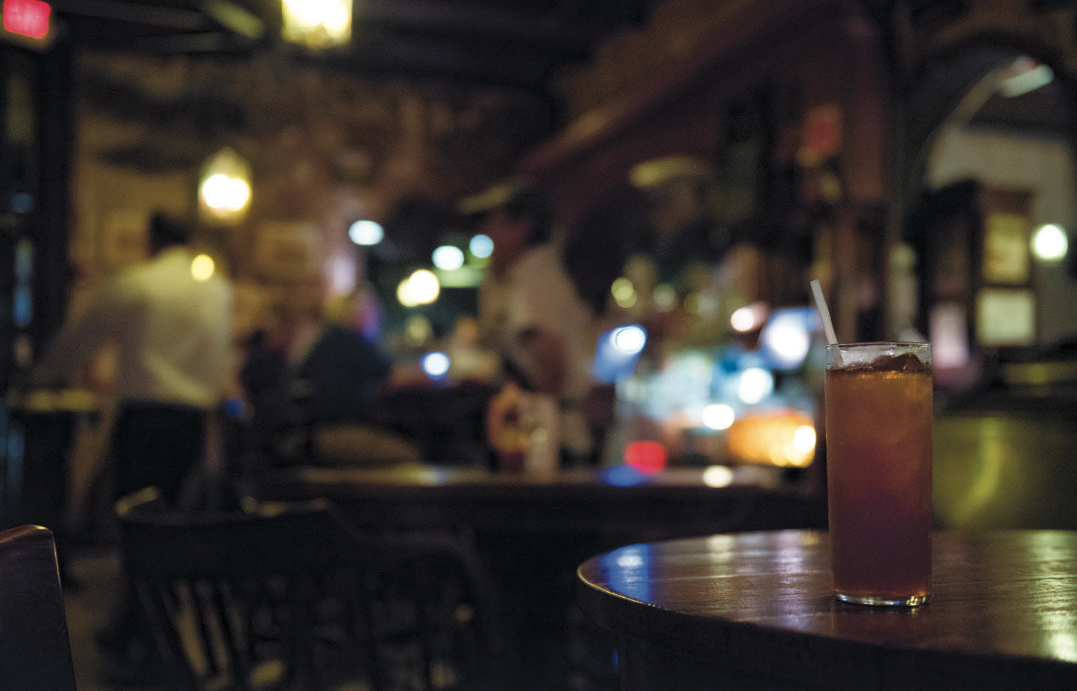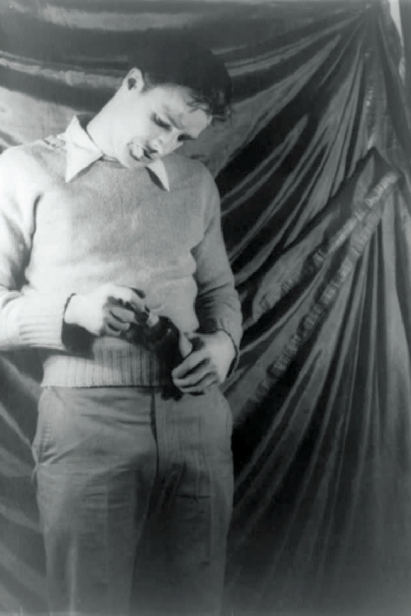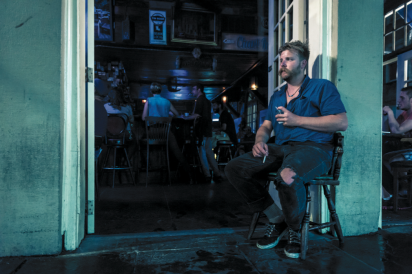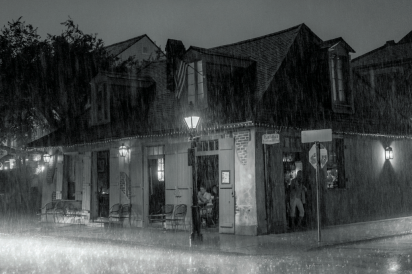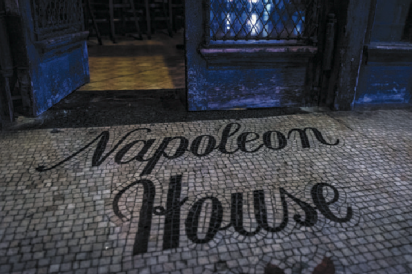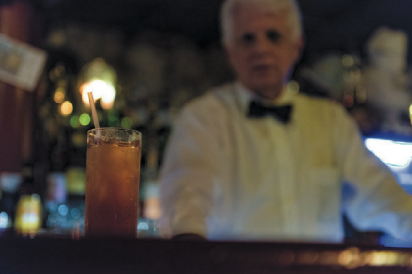Re-Drinking Streetcar
It’s not surprising that Tennessee Williams set so many stories and plays in the French Quarter and its immediate neighborhoods. The Quarter embodies the elements of drama: a visually compelling setting, characters, dynamic emotions and extremes, the element of surprise.
Indeed, in the course of writing about 100 bars for The French Quarter Drinking Companion, we came to understand that the simple act of sitting in a Vieux Carre bar is much like watching a short play unfold. And in the same way that a great piece of drama will reveal more with each reading or performance, so too does the Quarter. No two trips will yield exactly the same experience.
They’re connections Williams himself certainly made. He was not only an illustrious resident of the Quarter—both as a boarder in flophouses and later as the owner of a grand home on Dumaine Street—but also one of its most illustrious drinkers. Williams is often quoted as calling New Orleans his “spiritual home,” but he could just as well have said “spirited.”
Alcohol is not only ubiquitous in A Streetcar Named Desire, but so many of Streetcar’s themes and tensions still hold true for drinking in today’s French Quarter. The drama may not be set directly in the old neighborhood, but we are never far from it, perhaps a few blocks at most, just out of the frame or beyond the stage.
Liquor plays a role in almost every scene of Streetcar. Sometimes Williams’ characters sip on the sly or offstage and sometimes, as in the Quarter itself, unabashedly and openly. And true to the Quarter, Williams’ choices in the play run the gamut of high to low: champagne, whiskey, rum and cokes, beer. Of course, excessive drinking leads to tension and conflict, but without these, there would be no drama. It’s not a sober Stanley who cries “Stella!”
In Streetcar, alcohol undoubtedly fuels revelation—confession, emotional honesty, transgression—but Williams also understood the subtleties of alcohol. Where and how a person drinks tells us about character, as when Stella, in a show of devotion to her genteel sister, takes Blanche for dinner and cocktails at Galatoire’s.
Drinking in the city’s first neighborhood requires an acceptance and even an appreciation of proximity.
We note in The French Quarter Drinking Companion, the Vieux Carre is less than a square mile, and yet home to over 200 drinking spots. It’s a density found in few other American neighborhoods, and one that creates less of a particular demographic than a dynamic with watering holes ranging from highbrow, iconic spots to informal neighborhood joints to outright dives. As in Williams’ play, opulent grandeur and vulgar truth coexist just a few feet away. One can quickly seep into the other.
It’s this very juxtaposition that makes the Quarter one of the world’s great drinking destinations.
In Streetcar, Williams highlights these blurred physical and social boundaries. But unlike seasoned locals, newly arrived Blanche is taken aback by the closely packed buildings of downtown New Orleans and she’s shocked to see her sister and her husband living in a two-room shotgun apartment. Blanche finds her own accommodations have been reduced to a corner. In contrast, our debutante grew up outside a small Mississippi town in Belle Reve, a grand mansion with dozens of rooms and plenty of privacy. Usually located outside of town and set back from roads, old plantations created distance between the elite and the more common town folk.
As locals, we both smirk and sympathize with Blanche’s resistance to shotgun living. Blanche makes efforts to re-establish divisions and privacy when she hangs a flimsy set of curtains, and when she places a paper lantern over the bulb to soften the light. We even come to see her lies about her recent history and reasons for leaving her hometown as attempts to put distance between herself and the unfiltered reality of the New South.
Of course, Blanche’s efforts and desire for distance prove futile. In New Orleans boundaries quickly dissolve and downtown neighborhoods are simply too small to maintain strict divisions. What is hidden cannot remain so for very long.
The city’s muddled boundaries also extend to class and ethnicity, and true to the Quarter, Williams uses the fluidity of sound to show that rigid lines cannot be maintained. The playwright constantly reminds us of the proximity of Stanley and Stella’s neighbors, of the nearby bars and their music. We hear the shouts of the neighbors Eunice and Steve and the call of the Hispanic woman selling flowers for the dead.
“In this part of New Orleans,” Williams writes in his stage notes, “you are practically always just around the corner or a few doors down the street from a tinny piano being played with the infatuated fluency of brown fingers.”
Even Stella has crossed a staid boundary of Southern gentility by marrying a working class Pole. Unsurprisingly, Stanley, like the Quarter, is often loud. Of course, this noise—chatter, barkers, performers, bands and jukeboxes—remains an essential part of how we experience drinking in Quarter today, whether we are seated on a stool or walking with a togo cup in hand.
Great literature like great neighborhoods offers enduring appeal. Resisting fad and gimmicks, they instead cut to the core of what it means to be human, including our desires, however flawed they may be. Williams so masterfully renders his main characters in Streetcar that it isn’t hard to imagine, 67 years after their creation, Blanche, Stanley and Stella still walking the streets of the Quarter. And we’re pretty sure if they were, one of their first stops would be for a round. Possibly three.
Here’s where we imagine them drinking today:
Stanley
A “survivor of the Stone Age” is how Blanche refers to her brother in law, a World War II infantryman and now proud-as-punch blue collar worker. Intensely virile and physical, he’s a regular, no-nonsense drinker who disdains pretension. Stanley would have little use for “crafted cocktails” and even less for “mixologists.” Stanley’s needs? Cheap beer, affable company and loud banter. He and his buddies would probably make habits of either the Chart Room (300 Chartres) or Harry’s Corner Bar (900 Chartres) When we wrote about these two bars for The French Quarter Drinking Companion, we focused on their New Orleans sounds, the Yat accents of Harry’s and the soundtrack of the Chart Room. On the rare occasion Stanley felt the need for a man-to-man, he might head for the stools and screens of Johnny White’s (733 St. Peter) or Johnny White’s #2 Hole in the Wall (718 Bourbon) and confide to his best buddy Mitch between touchdowns.
Blanche
In an effort to remind herself of her once-genteel past, our Southern belle seeks out the refined and historic, ideally a spot with low lighting. The Carousel Bar (214 Royal) would fit the first bill, but is probably too bright and might reveal what she hopes to hide—her over-30 (gasp), unmarried face. Blanche would appreciate the dim lamps, plush seating, attentive service and quality cocktails of the Sazerac Bar (123 Baronne—just outside the Quarter) or French 75 (813 Bienville) where we suspect the animal prints would connect to her more primitive drives. Likewise we can also imagine her plying her charms behind the velvet curtains of one of the booths at the Bombay Club (830 Conti).
Stella
Not as extreme as either her sister or husband, Stella is a balancing act: a Southern woman who appreciates the beauty of her past while fully embracing the vitality of her new, freer lifestyle. Stella is equally comfortable taking Blanche to Galatoire’s or going to watch Stanley bowl, but if she gets to choose, we suspect her preferred watering hole is somewhere quiet, romantic and, most of all, a place that feels like her adopted city. Laffite’s Blacksmith Shop (941 Bourbon) offers that perfect middle place. Not too toney, it exudes the welcoming vibe of a neighborhood bar. As we note in the FQDC, “the bar’s only illumination is candlelight ... and patrons are compelled to lean in to see each other. This motion repeats at each table and the bar fills with a tableau of spies and illicit lovers plotting intrigue.” On hot days (and when are they not?) we can also see Stella drinking Pimm’s cups at Napoleon House (500 Chartres) or Tujague’s (823 Decatur).


